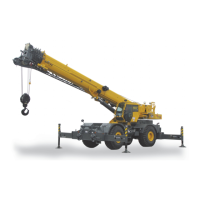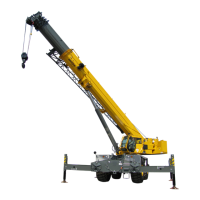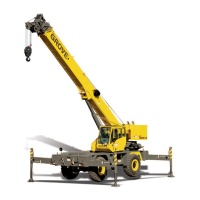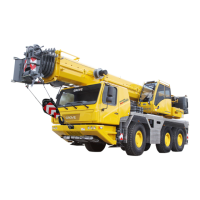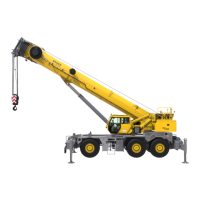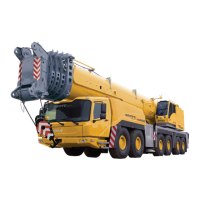OPERATING CONTROLS AND PROCEDURES RT765E-2 OPERATOR MANUAL
3-18 Published 4-09-2021, Control # 364-11
actuate the swing brake to slow or stop swing motion.
Braking is proportional to pedal depression. With the pedal
not depressed and the swing brake control valve
disengaged, hydraulic pressure is applied to the brake,
overcoming spring pressure and releasing the brake.
Depressing the pedal actuates a swing power brake valve to
apply pressure to the brake assembly. This pressure aids the
spring pressure to overcome the hydraulic pressure being
applied to the brake release circuit and applies the spring
brake according to the pressure from the swing power brake
valve.
Telescope Control Foot Pedal (Optional)
The Telescope Control Foot Pedal (4) Figure 3-12 is
supplied when the crane is equipped with an auxiliary hoist,
is located on the left side of the cab floor. Pushing forward on
the top of the pedal will extend the boom and pushing down
on the bottom of the pedal will retract the boom.
Service Brake Foot Pedal
The Brake Foot Pedal (5) (Figure 3-12) is the second pedal
from the right on the cab floor. Depressing the pedal controls
the application of the service brakes.
Foot Throttle Pedal
The Foot Throttle Pedal (6) (Figure 3-12) is located under
the RCL display module, on the floor. It is used to control
engine RPM which increases or decreases proportionately
with the amount of foot pressure applied to the pedal. The
pedal is electrically connected to the superstructure control
module which sends the signal to the engine ECM via the
J1939 data link.
MISCELLANEOUS CONTROLS AND
INDICATORS
Fuse Panel
The fuse panel (1) (Figure 3-13) is located behind the cab
seat and on the cab fuse and relay panel assembly. It
contains up to 20 fuses that protect the various electrical
components of the crane.
Buzzer
The buzzer (2), located behind the cab seat, sounds when
the following conditions exist:
• the ignition switch is turned to RUN; buzzer will sound
for two seconds
• after the engine is started until the proper hydraulic oil
pressure is reached
• engine stop
• emergency stop switch activated
• transmission service
• low brake pressure
• high hydraulic oil temperature
• high transmission oil temperature
• low steer pressure condition (for CE units)
• hoist third wrap condition (for CE units)
Rated Capacity Limiter (RCL) Emergency
Override Switch (Non-CE Certified Cranes)
The RCL system, when programmed accurately, will lockout
the three craning functions—boom down, telescope extend,
and hoist up—when a lift is attempted at or above the crane's
capacity or when a two-block condition exists. Locking out
these three functions prevents the overload or two-block
condition from worsening.
The RCL emergency override switch (3, Figure 3-13) is a key
operated switch that is located inside the operator’s cab on
the panel assembly behind the seat. When actuated (turned
clockwise), the switch will override and prevent the RCL from
locking out the three craning functions (boom down,
telescope extend, and hoist up) should an overload or two-
block condition occur.
Overriding the RCL with this switch should only be done in
the case of an emergency or when servicing the boom.
A flashing light on the RCL display indicates the switch has
been activated.
Refer to the RCL Operator Manual for more information.
WARNING
Loss of RCL Monitoring Hazard!
The RCL Emergency Override switch is to be used in
emergency situations only.
Do not operate the crane with the RCL overridden during
normal operations.

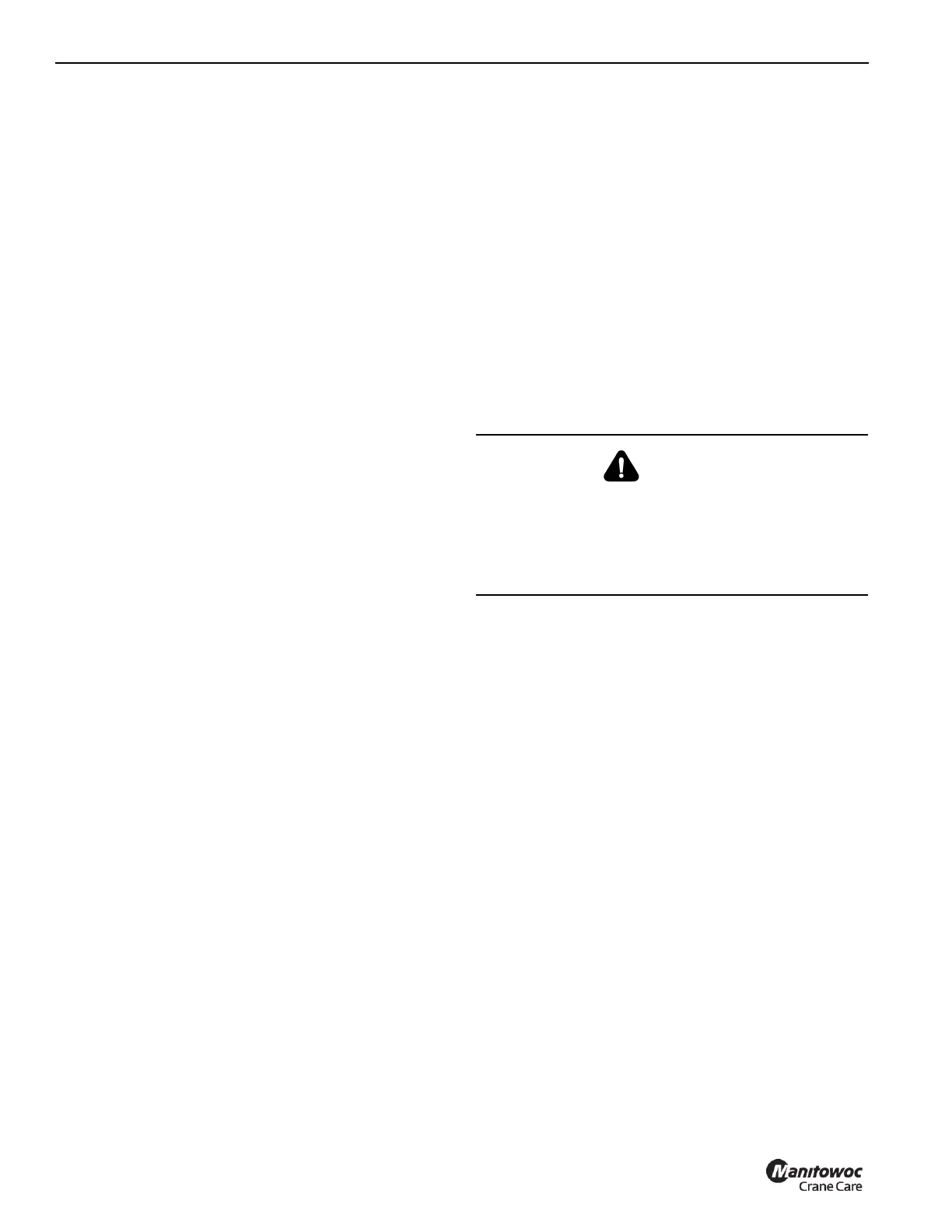